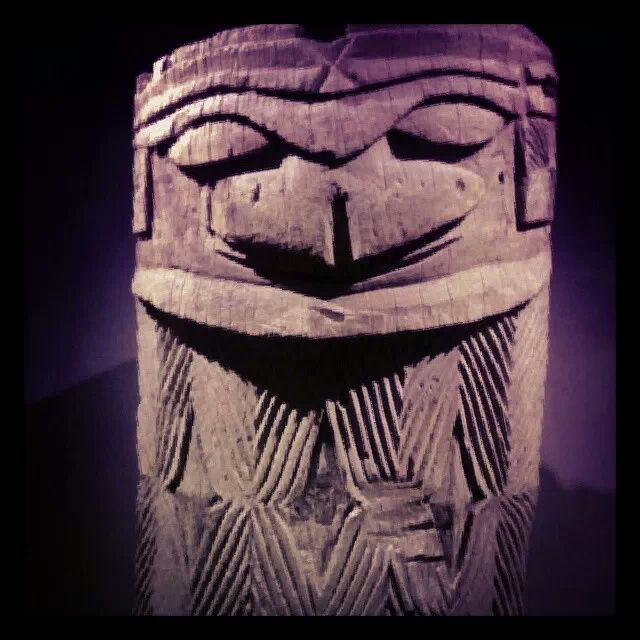James Cook (1728-1779) was the first English sailor to pass close to New Caledonia during his second Pacific expedition. He was to rename the Big Land in Caledonia, evoking the old Latin name for Scotland.[...]
Read More
Anthropological Notes
James Cook (1728-1779) was the first English sailor to pass close to New Caledonia during his second Pacific expedition. He was to rename the Big Land in Caledonia, evoking the old Latin name for Scotland.[...]
Read MoreKanak is an originally Polynesian term to define “man”. Since 19th centuries it was used by merchants and explorers to indicate Melanesian populations and its meaning became increasingly pejorative, because it was pointing the slaves working on the sails, in the mines and fields, and so on. [...]
Read MoreThe temporary exhibition “Kanak. L’Art est une Parole” at Musée du Quai Branly is shaped as a typical Kanak’s Big House : at the entrace there are wooden statues evoking ancestor’s presence among inhabitants, while the background the flute sound means the world interpretation before word. [...]
Read MoreThe research on the field consists in switching from the personal experience to the paper redaction, so the ethnographer witness and produce the information about social and cultural process. In the first article I hinted this topic talking about Franz Boas and Bronislaw Malinowski.
Read MoreNella giornata mondiale indetta dall'ONU contro la violenza sulle donne anche noi vogliamo sensibilizzare sul tema affrontandolo con una foto simbolo prese nei nostri viaggi e un breve sunto della condizione della donna nelle società tribali melanesiane.
In the UN World Day to sensibilize on Violence Against Woman we take part as well with a symbolic photo and a brief description of the gender issue in the melanesian tribal societies.
Read MoreThis picture was shooted at @Canadian Centre Cultuerl in @Paris during Stan Douglas’ photographic exhibition called “Abandonment and Spledour”
It’s 1996 in an Inuit Church in Yuqout, this photo is part of Nootka Sound series. The exposition presents other five series of ruins’ images, due to their brutal state of place. Their own history is evoked by their images, which have as common characteristics the suspension, it seems time stopped after shooting.
Stan Douglas puts together past and present in one unique time which it is never began nor ended. He collects everything humans left behind, in this case the colonial influence, which transformed indigenous between modern and progressist standard. The abandoned places in the pictures evoke lost population and culture, gave in to the most powerful.
[....] In Anhtropology the so-called “research on the field” was firstly made by Franz Boas (1858-1942). He studied the Kwakiutl Eskimo’s Potlach, they leave along the Pacific Coast in the northern British Columbia, Canada. The Potlach is a ceremonial to achieve a status change, where the social prestige is acquired by giving: among Kwakiutl the social dimension subordinates the economic one.[...]
Read MoreThe 8th UNESCO Youth Forum was held in Paris from 29th to 31st October 2013. [...] After three days of debates, ateliers and desks I understood that Oceania was not considered, why?
Read MoreWhy did we name it “Fine Tribal”? Fine and Tribal sound an oxymoron, isn’t it? However, Oceanic Art is made with a rare and refined craftsmanship which results in the most precious pieces among Tribal Arts. So Fine Tribal Art is the proper definition for what we collected during our travels.
Read More